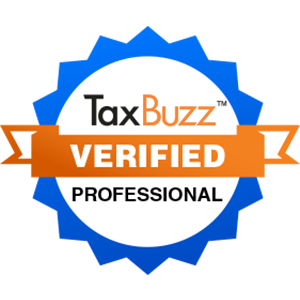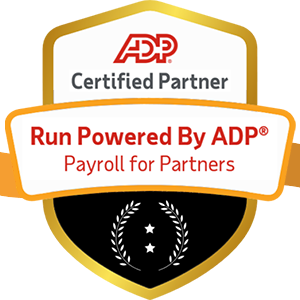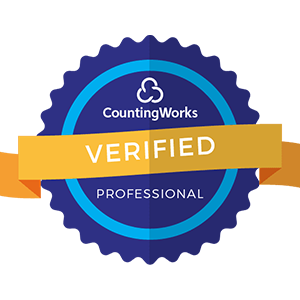
Every penny counts in the fast-paced world of small and medium-sized businesses (SMBs). But what if we told you that your outdated payroll system is silently draining your resources, hampering growth, and potentially putting your business at risk? It's time to remove the curtain and reveal the hidden costs behind those aging payroll processes.

Imagine this: You're running a thriving small business, proud of your lean operations and cost-cutting measures. But beneath the surface, your old-school payroll system is like a slow leak in your ship's hull – barely noticeable at first but capable of sinking your entire operation if left unchecked.
The Hidden Cost Iceberg:
Let's dive deep into outdated payroll systems' murky waters and determine your business's actual cost.
In the age of automation, manual payroll processes are like trying to win a Formula 1 race with a horse and buggy. Sure, you might eventually cross the finish line, but at what cost?
Every hour spent manually inputting data, double-checking figures, and reconciling discrepancies is an hour stolen from strategic tasks that could grow your business. Let's break it down:
But that's just the tip of the iceberg. Consider the opportunity cost of what your payroll staff could be doing with that time:
The Time-Value Framework: Every hour spent on manual payroll tasks is not invested in growth-driving activities. It's not just about the direct cost – it's about the potential value lost.
Inefficient payroll processes don't just affect your payroll team. They create a ripple effect throughout your entire organization:
The Efficiency Multiplier: Upgrading your payroll system saves time for your payroll team and creates an efficiency multiplier across your entire organization.
Human error is inevitable, but in payroll, it can be catastrophic. Outdated systems that rely heavily on manual input are breeding grounds for mistakes with far-reaching consequences.
Let's look at the numbers:
But the actual cost goes beyond just the time and money spent fixing mistakes:
The Trust Erosion Model: Each payroll error chips away at the foundation of trust between employer and employee. Over time, this erosion can lead to higher turnover rates and difficulty attracting top talent.
In the complex world of payroll regulations, mistakes can lead to severe penalties and legal issues:
The Compliance Cost Calculator:
While wrestling with spreadsheets and manual calculations, your competitors leverage cutting-edge payroll technology to gain a significant advantage.
Outdated payroll systems don't just slow you down – they hold you back from adopting innovative practices that could transform your business:
The Innovation Adoption Curve: Businesses that lag in adopting new payroll technologies become increasingly disadvantaged as time passes. The gap between early adopters and laggards widens, making catching up harder and more expensive.
In today's job market, employee experience is everything. Outdated payroll systems can be a major turn-off for both current and potential employees:
The Employee Satisfaction Equation: Modern payroll systems contribute significantly to overall job satisfaction, affecting productivity, retention, and your ability to attract top talent.
Your payroll data is a goldmine of insights waiting to be tapped. But with an outdated system, you leave that gold in the ground.
Modern payroll systems don't just process payments – they provide a wealth of data that can inform strategic decision-making:
The Data-Driven Decision Framework: Businesses that leverage payroll data for strategic insights can make more informed decisions, leading to better outcomes and competitive advantages.
Outdated payroll systems often exist in isolation, creating data silos that prevent a holistic view of your workforce:
The Integration Imperative: Modern, integrated payroll systems break down these silos, allowing for a 360-degree view of your workforce that can drive better decision-making across the organization.
In an era of increasing cyber threats and data privacy regulations, outdated payroll systems are like leaving your front door open in a high-crime neighborhood.
Payroll data is some of the most sensitive information your company handles. Outdated systems may lack critical security features, putting you at risk for:
The Security Cost Calculator:
As data protection regulations like GDPR and CCPA become more stringent, outdated payroll systems may struggle to keep up:
The Compliance Readiness Spectrum: Modern payroll systems are designed with compliance in mind, making it easier to comply with increasingly complex regulations.

Now that we've explored the hidden costs of outdated payroll systems let's look at the bright side. Upgrading to a modern payroll solution can transform your business in ways you might not have imagined.
Imagine cutting your payroll processing time by 50% or more. With modern, automated systems, this isn't just a dream – it's a reality for many SMBs:
The Time Savings Multiplier: Every hour saved on payroll processing is an hour that can be reinvested in strategic initiatives to grow your business.
Modern payroll systems come with built-in safeguards and validation checks that dramatically reduce the risk of errors:
The Accuracy Impact Model: Improved payroll accuracy leads to increased employee trust, reduced compliance risks, and fewer resources wasted on corrections.
With advanced reporting and analytics capabilities, modern payroll systems turn your data into actionable insights:
The Data-Insight-Action Cycle: Better data leads to deeper insights, which drive more effective actions and improved outcomes.
Modern payroll systems often come with user-friendly employee self-service portals that put power in the hands of your workforce:
The Employee Empowerment Effect: When employees have control over their payroll information, it leads to increased satisfaction, reduced administrative burden on HR, and improved overall employee experience.
Up-to-date payroll systems are designed to adapt to the ever-changing landscape of payroll regulations:
The Compliance Peace of Mind Factor: With a modern payroll system, you can rest easy knowing you're well-equipped to handle current and future compliance requirements.

Are you convinced that it's time to upgrade your payroll system? Here's a roadmap to guide you through the process:
Before you can move forward, you need to understand where you stand:
The Gap Analysis Framework: Compare your current state to your desired future state to identify the critical areas for improvement.
The payroll software market is vast, but not all solutions are created equal:
The Vendor Evaluation Matrix: Create a scoring system to compare payroll solutions based on your needs and priorities objectively.
A smooth transition is crucial for minimizing disruption to your business:
The Change Management Roadmap: Use established change management principles to guide your organization through the transition with minimal resistance.
Once your new system is in place, the work isn't over:
The Continuous Improvement Loop: Treat your payroll system upgrade as an ongoing refinement and optimization process rather than a one-time event.
As we've uncovered the hidden costs of outdated payroll systems, one thing becomes clear: the price of inaction is far greater than the cost of upgrading. Every day you continue with an outdated system is a day of lost productivity, increased risk, and missed opportunities.
The Upgrade Imperative: In today's competitive business landscape, upgrading your payroll system isn't just an option – it's necessary for SMBs that want to thrive.
By investing in a modern payroll solution, you're not just cutting costs—you're investing in your business's future. You're empowering your employees, arming yourself with valuable insights, and positioning your company for growth and success.
The question isn't whether you can afford to upgrade your payroll system. The real question is: Can you afford not to?
Take the first step today. Assess your current payroll processes, explore your options, and start your journey toward a more efficient, accurate, and insightful payroll system. Your future self – and your employees – will thank you.


